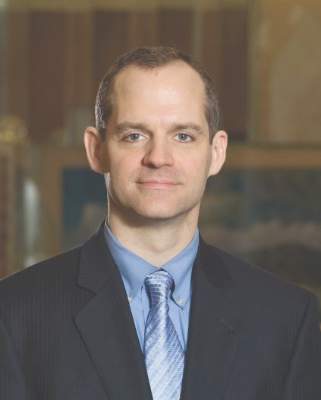User login
Illicit drug use in the United States continues to rise. In 2014, 27 million people reported using an illicit drug in the previous 30 days. This corresponds to nearly 1 in every 10 Americans.
Use of marijuana has the highest prevalence, followed distantly by pain relievers, tranquilizers, stimulants, and cocaine. Resources for drug users who want to quit are difficult to access – and even if those resources are available, they may be constrained.
For patients struggling with alcohol dependence who want to quit, Alcoholics Anonymous (AA) is the most well-known and ubiquitous 12-step mutual help organization (MHO). Other MHOs, such as Narcotics Anonymous (NA), exist for illicit substances such as opiates (e.g., heroin), stimulants, or cannabis. Shared experiences are hypothesized to maximize therapeutic benefit.
But what, then, should we do if somebody struggling with illicit substance dependence wants to remain abstinent from drugs and there are only AA groups around?
Harvard investigators suggest that support from AA for patients with illicit substance addiction is not associated with early discontinuation or compromised recovery. To evaluate this, researchers examined treatment outcomes among young adults participating in residential treatment in Minnesota (Alcohol Alcohol. 2014 Nov;49[6]:645-3).
Four groups of patients with drug use disorder were evaluated: alcohol, cannabis, opiates, or stimulants. The goal was to compare the relative success of individuals with fellowship “mismatch” (e.g., attending AA but was a primary user of cannabis), compared with those who had a fellowship match. Success during aftercare was defined as percentage of days abstinent and attendance at the MHO.
Investigators observed that in the first 3 months after discharge from the residential treatment program, a significant proportion (79%) of the meetings attended by the cannabis, opiates, or stimulant users were AA meetings. This mismatch was unrelated to 12-step attendance at 6 and 12 months, or to percentage of days abstinent.
Available literature suggests that 12-step MHO participation is a predictor of better treatment outcomes. The findings from this study suggest that AA attendance among patients recovering from cannabis, opiates, or stimulant use disorder is beneficial. Patients with illicit drug use disorder should be encouraged to attend AA if other MHOs are not accessible.
Dr. Ebbert is professor of medicine, a general internist at the Mayo Clinic in Rochester, Minn., and a diplomate of the American Board of Addiction Medicine. The opinions expressed are those of the author and do not necessarily represent the views and opinions of the Mayo Clinic. The opinions expressed in this article should not be used to diagnose or treat any medical condition, nor should they be used as a substitute for medical advice from a qualified, board-certified practicing clinician. Dr. Ebbert has no financial disclosures relevant to this article.
Illicit drug use in the United States continues to rise. In 2014, 27 million people reported using an illicit drug in the previous 30 days. This corresponds to nearly 1 in every 10 Americans.
Use of marijuana has the highest prevalence, followed distantly by pain relievers, tranquilizers, stimulants, and cocaine. Resources for drug users who want to quit are difficult to access – and even if those resources are available, they may be constrained.
For patients struggling with alcohol dependence who want to quit, Alcoholics Anonymous (AA) is the most well-known and ubiquitous 12-step mutual help organization (MHO). Other MHOs, such as Narcotics Anonymous (NA), exist for illicit substances such as opiates (e.g., heroin), stimulants, or cannabis. Shared experiences are hypothesized to maximize therapeutic benefit.
But what, then, should we do if somebody struggling with illicit substance dependence wants to remain abstinent from drugs and there are only AA groups around?
Harvard investigators suggest that support from AA for patients with illicit substance addiction is not associated with early discontinuation or compromised recovery. To evaluate this, researchers examined treatment outcomes among young adults participating in residential treatment in Minnesota (Alcohol Alcohol. 2014 Nov;49[6]:645-3).
Four groups of patients with drug use disorder were evaluated: alcohol, cannabis, opiates, or stimulants. The goal was to compare the relative success of individuals with fellowship “mismatch” (e.g., attending AA but was a primary user of cannabis), compared with those who had a fellowship match. Success during aftercare was defined as percentage of days abstinent and attendance at the MHO.
Investigators observed that in the first 3 months after discharge from the residential treatment program, a significant proportion (79%) of the meetings attended by the cannabis, opiates, or stimulant users were AA meetings. This mismatch was unrelated to 12-step attendance at 6 and 12 months, or to percentage of days abstinent.
Available literature suggests that 12-step MHO participation is a predictor of better treatment outcomes. The findings from this study suggest that AA attendance among patients recovering from cannabis, opiates, or stimulant use disorder is beneficial. Patients with illicit drug use disorder should be encouraged to attend AA if other MHOs are not accessible.
Dr. Ebbert is professor of medicine, a general internist at the Mayo Clinic in Rochester, Minn., and a diplomate of the American Board of Addiction Medicine. The opinions expressed are those of the author and do not necessarily represent the views and opinions of the Mayo Clinic. The opinions expressed in this article should not be used to diagnose or treat any medical condition, nor should they be used as a substitute for medical advice from a qualified, board-certified practicing clinician. Dr. Ebbert has no financial disclosures relevant to this article.
Illicit drug use in the United States continues to rise. In 2014, 27 million people reported using an illicit drug in the previous 30 days. This corresponds to nearly 1 in every 10 Americans.
Use of marijuana has the highest prevalence, followed distantly by pain relievers, tranquilizers, stimulants, and cocaine. Resources for drug users who want to quit are difficult to access – and even if those resources are available, they may be constrained.
For patients struggling with alcohol dependence who want to quit, Alcoholics Anonymous (AA) is the most well-known and ubiquitous 12-step mutual help organization (MHO). Other MHOs, such as Narcotics Anonymous (NA), exist for illicit substances such as opiates (e.g., heroin), stimulants, or cannabis. Shared experiences are hypothesized to maximize therapeutic benefit.
But what, then, should we do if somebody struggling with illicit substance dependence wants to remain abstinent from drugs and there are only AA groups around?
Harvard investigators suggest that support from AA for patients with illicit substance addiction is not associated with early discontinuation or compromised recovery. To evaluate this, researchers examined treatment outcomes among young adults participating in residential treatment in Minnesota (Alcohol Alcohol. 2014 Nov;49[6]:645-3).
Four groups of patients with drug use disorder were evaluated: alcohol, cannabis, opiates, or stimulants. The goal was to compare the relative success of individuals with fellowship “mismatch” (e.g., attending AA but was a primary user of cannabis), compared with those who had a fellowship match. Success during aftercare was defined as percentage of days abstinent and attendance at the MHO.
Investigators observed that in the first 3 months after discharge from the residential treatment program, a significant proportion (79%) of the meetings attended by the cannabis, opiates, or stimulant users were AA meetings. This mismatch was unrelated to 12-step attendance at 6 and 12 months, or to percentage of days abstinent.
Available literature suggests that 12-step MHO participation is a predictor of better treatment outcomes. The findings from this study suggest that AA attendance among patients recovering from cannabis, opiates, or stimulant use disorder is beneficial. Patients with illicit drug use disorder should be encouraged to attend AA if other MHOs are not accessible.
Dr. Ebbert is professor of medicine, a general internist at the Mayo Clinic in Rochester, Minn., and a diplomate of the American Board of Addiction Medicine. The opinions expressed are those of the author and do not necessarily represent the views and opinions of the Mayo Clinic. The opinions expressed in this article should not be used to diagnose or treat any medical condition, nor should they be used as a substitute for medical advice from a qualified, board-certified practicing clinician. Dr. Ebbert has no financial disclosures relevant to this article.

